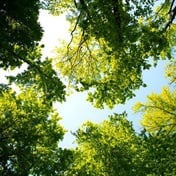Amid the highest recorded pollen counts in history, Health24 will be bringing you exclusive pollen count updates courtesy of the UCT Lung Institute's Allergy and Immunology Unit.
All you need to know about the ragweed invasion
Here are the major city updates for 30 January:
Cape Town (Western Cape)
Low levels were detected for grasses, extremely low levels for trees (one pollen grain for eucalyptus) and no weed pollen was detected. Fungal spore levels were also low, but after rain a small spike was seen for Cladosporium.
Count: 4 (low) [Last week: 6 (moderate)]
Johannesburg (Gauteng)
Grass levels were moderate to high during this sampling week. Tree levels were low, and the types: plane, eucalyptus, olive, birch, acacia and casuarina were seen. Weeds were similarly low and only daisy and goosefoot were detected in the ambient air. Moulds were very low.
Count: 29 (high) [Last week: 8 (moderate)]
Kimberley (Northern Cape)
Grass level were high with consistently high levels on every day of this sampling period. Tree levels were low (olive) as were weeds (goosefoot). Mould levels were low, but small spikes for Cladosporium were seen.
Count: 24 (high) [Last week: 7 (moderate)]
Durban (KZN)
Fungal spore levels were high during this sampling period. Grass levels were low. Tree levels were similarly low (mulberry and eucalyptus) as were weeds (ragweed and ferns).
Count: 4 (low) [Last week: 7 (moderate)]
Port Elizabeth
Pollen levels were very low during this sampling period. Scanty grasses, low tree levels (eucalyptus and olive) and low weeds (protea) were detected. Fungal spores were low.
Count: 3 (low) [Last week: 2 (very low)]
Bloemfontein
Bloemfontein: Grasses decreased vbut the mean count remained high. The daily count exceeded 100 grains/ cu M on 22/2. Tree pollen was low, but Buddleja, olive, cypress and olive was seen in low numbers. The weed count was low and consisted of Chenopod (goosefoot) and daisy. Mould were very low.
Count: 34 (very high) [Last week: 69 (very high)]
See the full report HERE.
Reference ranges:
Overall, Trees, Grasses and Weeds all use the same values (grains per cubic metres of air).
Overall count is the daily average of pollen grains per cubic metres of air (trees plus grasses plus weeds)
In partnership with the UCT Lung Institute's Allergy and Immunology Unit.
As the pollen problem worsens, precise and expanded monitoring becomes even more essential. And here's how you can help.
Image credit: Jonas Weckschmied, Unsplash




 Publications
Publications
 Partners
Partners















